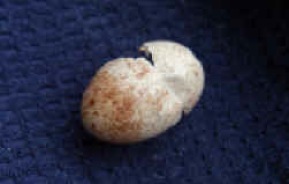By John Lejeune Sr.
More than thirty years ago, when I bred the first Tundra peregrine falcons, I accidentally cracked and damaged one egg. I fixed the egg with clear silicone and kept putting it back in the old “Marsch Farm” incubator, turning and cooling it by hand. The egg hatched after normal days of incubation.


I named the bird “Cracky”, trained and flew it in falconry fashion and in addition I let it loose every day while walking down from my house on the hill near the Fraser river to my falcon breeding aviaries below. I lived in Hope B.C. at the time.
One day “Cracky” decided to chase a bird across the mighty Fraser River and could not be found. A month later she was caught by a fellow falconer one hundred miles down river near Ladner. I changed her name to “Lucky” and a year later she did the same thing, flew down the river a hundred miles and was caught within a day in the same vicinity as the year before. Over the years I cracked perhaps a dozen eggs. Some hatched but others did not make it. A few times, I had to make a fast and panic stricken run to the hardware store to buy the magic plastic glue. Today a tube of clear silicone is stored each season beside at least one of my many incubators.
This year, 2006, I had to use it twice. The first time was an unimportant small crack, but the second time was different. Empress, one of my whitest three year old gyrfalcons, laid three eggs for the first time. I took them away after 14 days of incubation. The bird defended the eggs and in the process stepped on one quite badly.
